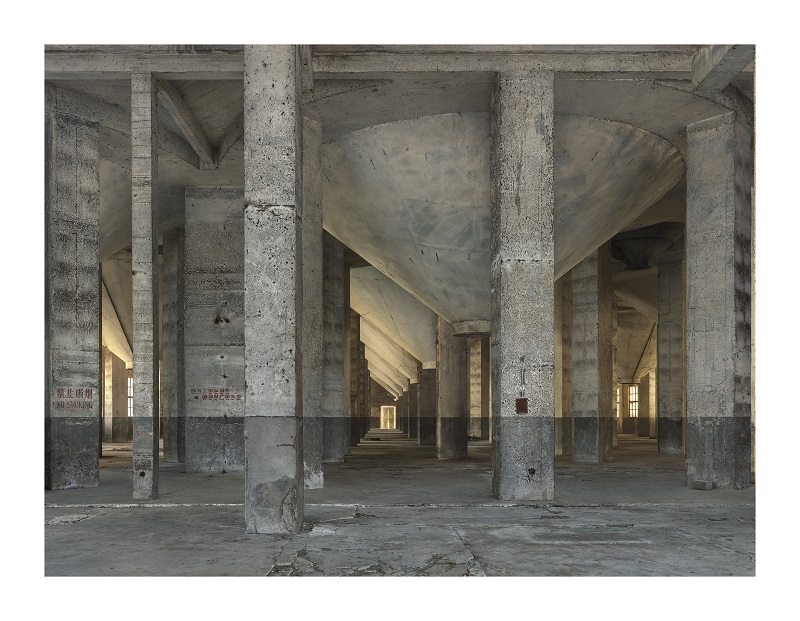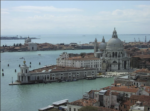Ljubodrag Andric – Consonanze

Visioni e contaminazioni tra Oriente e Occidente in sintonia con Carlo Scarpa.
Comunicato stampa
LJUBODRAG ANDRIC
CONSONANZE. Visioni e contaminazioni tra Oriente e Occidente in sintonia con Carlo Scarpa
Mostra a cura di Ljubodgrag Andric
I grandi muri che parlano, e ascoltano Le fotografie di Ljubodrag Andric, stampate in un ampio formato che assorbe l’interezza del campo visivo, non includono mai la presenza della figura umana. Le sue visioni si soffermano su architetture riprese frontalmente, esaltando la fissità metafisica delle pareti e l’orizzontalità delle linee che proseguono oltre i margini dell’immagine. Sono muri nudi, ma non muti. Campiture di colore dispiegate verso una nozione di pittura astratta, che però accorciano repentinamente le distanze dalla realtà non appena l’occhio dell’osservatore intuisce la presenza di un dettaglio concreto: la colatura di umidità, l’imperfezione del cemento, la crepa, il ciuffo d’erba, la maniglia di una porta laddove lo sguardo non la attendeva. I paesaggi urbani di Andric recano la traccia interiore, in assenza, di chi li ha edificati e di chi attende di abitarli. Interpellano lo spettatore e lo invitano a entrare in uno spazio di relazioni potenziali. E il dialogo che queste immagini generano non può che prendere spunto dallo spazio che ospita la mostra, ovvero la Fondazione Querini Stampalia, luogo di uno dei più celebri interventi di Carlo Scarpa. Come sottolinea Francesca Valente, curatrice della mostra e già direttore degli Istituti italiani di cultura di San Francisco, Toronto, Vancouver, Chicago e Los Angeles: “Nel contesto della Fondazione Querini Stampalia, Andric dialoga con Carlo Scarpa in una dimensione sospesa fra oriente e occidente, intrinseca alla città lagunare. E il suo sguardo si sofferma in particolar modo sul giardino, luogo ideale per un viaggio interiore, ancora in parte da intraprendere. Si realizza così un percorso di efficace sintesi emotiva il cui approdo è una identità personale stratificata, composita, fatta di suggestioni e ricordi, sedimentazioni, citazioni e riverberi paradossalmente remoti e quotidiani, antichi e contemporanei”. Anche Tobia Scarpa, architetto come il padre Carlo, nel testo scritto per la pubblicazione che accompagnerà la mostra, si sofferma sul potenziale dialogico delle fotografie esposte: “nelle fortissime immagini di Ljubodrag Andric […] l’indagine sulla forma e sul retaggio umano, che emerge senza presunzione, invoca chi guarda a una riflessione in cui si annodano molti quesiti”.
La mostra Le oltre trenta immagini saranno esposte negli spazi della Fondazione Querini Stampalia dal 26 agosto al 2 ottobre 2016. Si tratta di fotografie della produzione più recente dell’artista, che ha realizzato gli scatti prevalentemente in alcune città della Cina, a San Francisco e a Miami, con qualche incursione in Canada (paese in cui risiede) e in Europa, segnatamente a Berlino e Venezia.
“Andric guarda la geometria dello spazio con la stessa logica con cui Morandi costruiva formalmente i modelli delle sue nature morte” Demetrio Paparoni
“Per Andric le sensazioni astratte che si possono trovare per mezzo dei luoghi reali, lungi dall’essere indebolite da compromessi, sono risonanti e potenti come quelle prive di referenti nella realtà” Barry Schwabsky
“È la sensibilità unica di Andric per ciò che l’obiettivo riesce a fare in maniera tanto appropriata – il modo in cui serve non tanto a commemorare il particolare stato di quello che registra quanto piuttosto ad accettarne la mutevolezza e l’impermanenza – a caratterizzare le sue fotografie […] Oggi, la retorica unica dell’approccio di Ljubodrag Andric alla creazione di immagini, guidato da una fine sensibilità per la monumentalità ambivalente, ci sembra più radicale e urgente che mai” Philip Tinari
“Andric ci porta oltre i muri. Spesso per sfinimento. Negandoci il diversivo. Ci spinge nel muro e ci obbliga (con nostro grande piacere, devo dire) a riconoscerne sì il limite, ma anche la sua impossibilità.” Aldo Nove
LJUBODRAG ANDRIC
CONSONANCE. Visions & Contaminations between East and West in harmony with Carlo Scarpa
A show curated by Francesca Valente
Walls that talk and listen Ljubodrag Andric creates large-scale photographs that dominate the entire field of vision, absorbing the viewer. Their visions linger on architectural details devoid of the human figure and are shot frontally, highlighting the metaphysical fixity of the walls and the horizontality of the lines that continue beyond the margins of the image. The walls Andric presents may be bare, but they are not silent. Abstract and naturalistic elements merge as the colourful backgrounds reminiscent of abstract painterly techniques are abruptly interrupted by details of concrete reality. Slowly we notice patches of damp creating a bloom of discolouration, imperfect layers of cement, cracks reaching across the façade, a resilient tuft of grass, or an incongruously placed door handle. These urban landscapes absent of any physical human form invite reflective contemplation as the walls are there, but not those who built them or those who lived behind them. Thus they challenge the viewer into engaging with a space inhabited by potential relationships, as we explore new visions and imbue the photographs with personal meaning and value. The dialogue generated by these images is further extended to include the space in which they are exhibited - the Fondazione Querini Stampalia, an inspiring and celebrated work of the architect Carlo Scarpa. Francesca Valente, the exhibition curator and former director of the Italian Cultural Institutes in San Francisco, Toronto, Vancouver, Chicago and Los Angeles, points out that, “In the context of the Fondazione Querini Stampalia, Andric interacts with Carlo Scarpa in a dimension suspended between the East and the West, and intrinsic to Venice. His glance is attracted particularly by the hidden garden, the ideal place for an inner journey, however incomplete or tenuous. As a result, the images create a path of effective emotional synthesis, which takes the form of a complex and layered personal identity. We are presented with a wealth of suggestions and memories, observations and reflections, that appear paradoxically remote and familiar, ancient and contemporary.” Tobia Scarpa, an architect like his father Carlo, also contributes to the accompanying text of the exhibition as he observes the dialogic potential of photographs. He notes, “In the powerful images by Ljubodrag Andric […] form and human heritage are investigated in a manner devoid of pretence or presumption that invites curious and reflective contemplation as well as awakening a host of intertwining questions.”
A collection of more than thirty images will be exhibited at the Fondazione Querini Stampalia, Venice, from August 26th to October 2nd, 2016. The selected works are the latest creations by the artist including photographs shot in cities such as China, San Francisco and Miami, as well as forays into his country of residence, Canada, and Europe with particular focus on Berlin and Venice.
“Andric looks at the geometry of the space with the same logic with which Morandi formally built the models of his still lives.” Demetrio Paparoni
“For Andric, abstract sensations can be found by way of actual places, far from being diluted by compromise, which are as resonant and powerful as those without any referent in reality.” Barry Schwabsky
“It is Andric’s unique sensibility about what the lens can do so aptly – the way it serves less to memorialise the particular state of that which it captures rather than to acquiesce to its mutability and impermanence – that characterises these images. […] Today, Ljubodrag Andric’s uniquely rhetorical approach to image making, driven particularly by a finely attuned radar for ambivalent monumentality, comes to seem more radical and urgent that ever.” Philip Tinari
“Andric takes us beyond the walls. Often through exhaustion. By denying us relief. He pushes us into the wall and forces us (to our great pleasure, I must say) to recognise its limit but also its impossibility.” Aldo Nove.



